#stegosauridae
Text
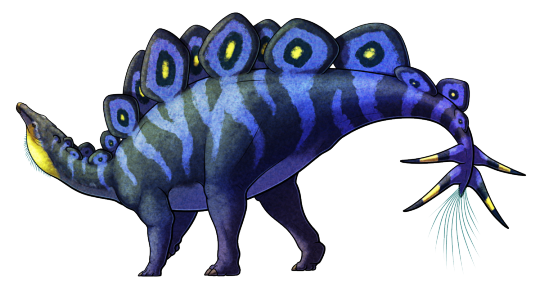
Strange Symmetries #11: Step Up To The Plate
Stegosaurs are some of the most popular and recognizable dinosaurs thanks to their unique appearances, with small heads, elaborate back plates, and spiky thagomizer tails.
Closely related to the ankylosaurs, they first appeared in the mid-Jurassic about 170 million years ago. While they lasted until at least the mid-Cretaceous (~100 milion years ago), their heyday was in the latter half of the Jurassic, ranging all across Asia, Europe, Africa, and North America – and the North American species like the eponymous Stegosaurus developed especially elaborate plates in a distinctive asymmetrical pattern, not arranged in pairs like most other stegosaurs but in alternating rows along each side of the midline of their backs.
Hesperosaurus mjosi lived around 156 million years ago during the late Jurassic, in what is now Wyoming and Montana in the Western United States. It was closely related to Stegosaurus but was a little older and a little smaller, about 5-6m long (~16-20').
Much like its more famous relative its plates seem to have alternated along its back, which may have been an adaptation to maximize visible surface area while minimizing the number of plates, saving on the energy needed to grow such large elaborate ornamentation.
Hesperosaurus might also represent a rare case of possible sexual dimorphism in non-avian dinosaurs, with wider more rounded plates potentially interpreted as belonging to males and taller pointed plates belonging to females.
———
NixIllustration.com | Tumblr | Twitter | Patreon
#science illustration#strange symmetries#paleontology#paleoart#palaeoblr#hesperosaurus#stegosauridae#stegosauria#thyreophora#ornithischia#dinosaur#art
533 notes
·
View notes
Text

An associated pair of fossilized gular armor of a Stegosaurus sp. from the Morrison Formation in Moffat County, Colorado, United States. These small bony ossicles served as extra protection around the vulnerable neck. These pieces of Stegosaurus neck armor are associated with cranial material that were identified by Dr. Kenneth Carpenter. Most of these "gular scutes" that were seen for sale around 2020 are from this same specimen.
#dinosaur#fossils#paleontology#palaeontology#paleo#palaeo#stegosaurus#thyreophoran#stegosauridae#ornithischian#jurassic#mesozoic#prehistoric#science#paleoblr#fossil friday#fossilfriday#ステゴサウルス#ステゴサウルス科#恐竜#化石#古生物学
5 notes
·
View notes
Text
Dinofact #47
The distinctive array of four spikes on the end of stegosaurines' tails is called a thagomizer.
Source: wikipedia
#dinosaur#dinosaurs#paleontology#thagomizer#stegosaurus#stegosaurid#stegosaurids#stegosaurine#stegosaurines#stegosauridae#fun facts#trivia#dinosaur trivia#dinosaur fun facts#10th#october#2022#october 10th#october 2022#october 10th 2022
77 notes
·
View notes
Photo
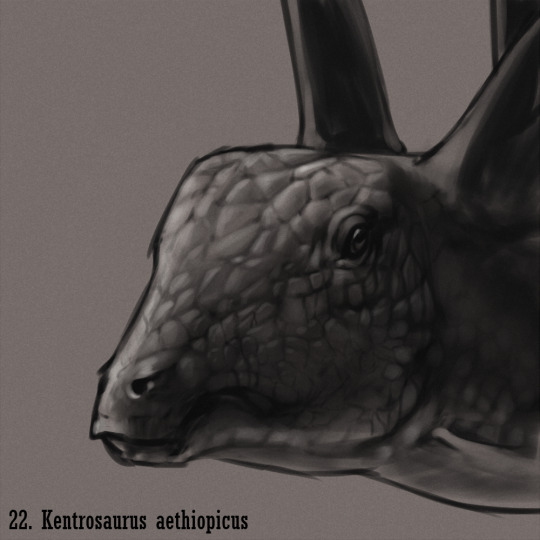
Day 22: Kentrosaurus aethiopicus
#Kentrosaurus aethiopicus#Kentrosaurus#Stegosauridae#Stegosauria#Eurypoda#Thyreophora#paleoart#paleoblr#palaeoblr#dinosaur#paleontology#archovember#archovember2022#dinovember2022#dinovember#art#digital art
43 notes
·
View notes
Photo

The last day of #Dinovember is day 30: Stegosaurus. Stegosaurus stenops with semi-arid skin colors and purple patterns all over the dorsal plate. #Dinovember2022 #paleoart #sketchbookapp #myart #stegosaurus #stegosaurusstenops #stegosauridae #stegosauria #ornithischia #dinosauria #dinosaur #stegosaur https://www.instagram.com/p/Clm1fbdLOWH/?igshid=NGJjMDIxMWI=
#dinovember#dinovember2022#paleoart#sketchbookapp#myart#stegosaurus#stegosaurusstenops#stegosauridae#stegosauria#ornithischia#dinosauria#dinosaur#stegosaur
4 notes
·
View notes
Text
The most complete Stegosaurid fossil found to date

The skeletal remains belong to a member of the Stegosauridae family and is the Stegosaurids most complete individual found to date. The fossil is composed of semi-articulated well persevered cranial and postcranial elements; This fossil will be valuable in understanding the Stegosaurid group further.
Research is being conducted on the specimen currently and the paper will be published at a later date.
source:
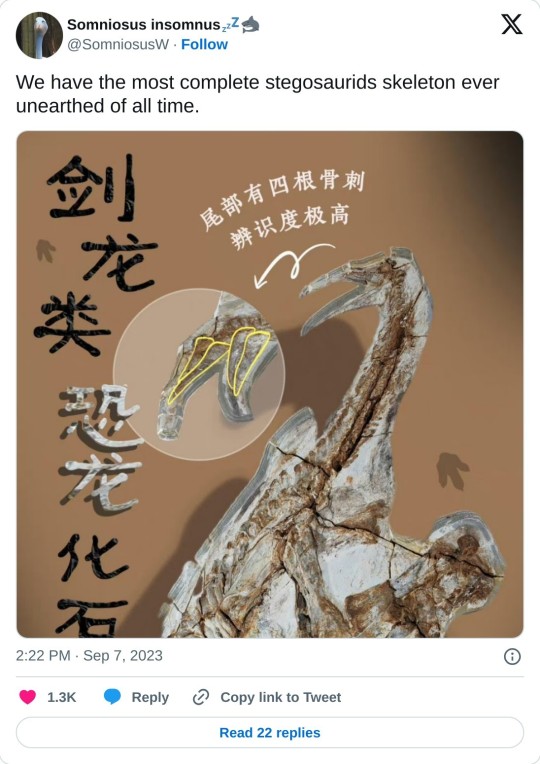
119 notes
·
View notes
Text
Extinct Animal Art: POST 1
I've been creating some assets for @palearaptor's Twitch streams. From time to time she has daily dino segments so I made some arts for them. <3 Here's the ones released so far.
ANCHIORNIS:
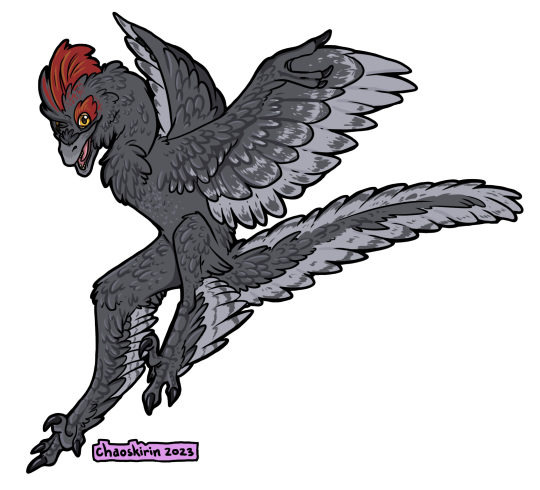
A winged dinosaur from the late Jurassic. We know its colors! Dark grey to black body with some white striping and flight feathers. It had a red crest.
ANUROGNATHUS:

Not a dinosaur! This little critter was a pterosaur from the later Jurassic. There were a few species, but this art is based on the holotype Anurognathus ammoni.
HETERODONTOSAURUS:
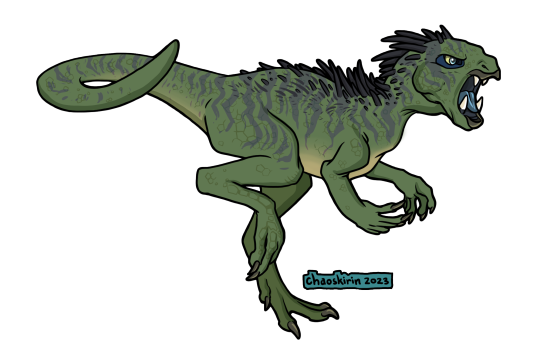
An early Jurassic dinosaur whose name means "different tooth." This is an herbivore, but probably used those sharp teeth for defense and display.
MIRAGAIA:
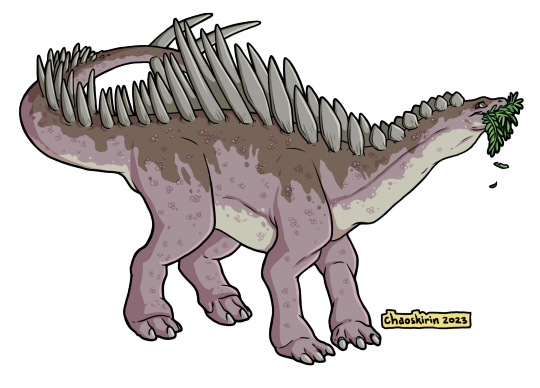
A stegosaurid dinosaur with the longest neck of all stegosaurs so far. Like all stegosauridae, it lived during the Jurassic period. There's some debate on how its spines were arranged, but this is the most accepted so far. It did NOT have shoulder spines like kentrosaurus.
PROTOCERATOPS:
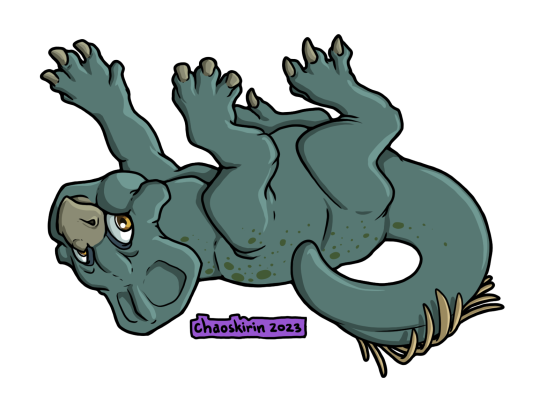
Protoceratops, a dinosaur from the late Cretaceous. Although its name means "first horned face," it actually came AFTER some of the more popular ceratopsians like Diablo ceratops. It is still considered an "early" ceratopsian. It was famously tangled in a life-and-death struggle with a velociraptor where both animals died and were fossilized together.
#dinosaurs#paleoart#extinct animal art#pterosaurs#anurognathus#anchiornis#heterodontosaurus#miragaia#protoceratops#ck's art#ck's original art
31 notes
·
View notes
Text
THE ONE AND ONLY OTHNIEL CHARLES MARSH

For Throwback Thursday we will be discussing one of the most important people in paleontology: Professor Othniel Marsh. He was born in Lockport, New York to a modest family but he was lucky enough to be the nephew of George Peabody.

Peabody paid for his formal education at Yale College where he received a bachelor's degree in...art?

He did receive a Berkeley Scholarship so he went on to study geology, mineralogy, and chemistry.

Fun fact, in 1866 he was appointed the professor of vertebrate paleontology at Yale University making him the very first professor of paleontology in the U.S.

The Peabody Museum of Natural History was founded and he was made one of the first curators.

Marsh went on to write 400 scientific papers, naming about 500 new species of fossil animals including many of our Morrison favorites:
Stegosaurus

Brontosaurus

Apatosaurus
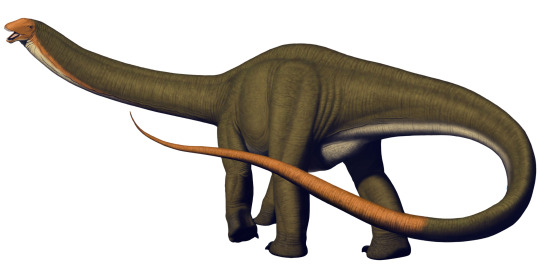
Allosaurus

Atlantosaurus

Camptosaurus

Ceratosaurus

Diplodocus

Dryosaurus

and Nanosaurus.
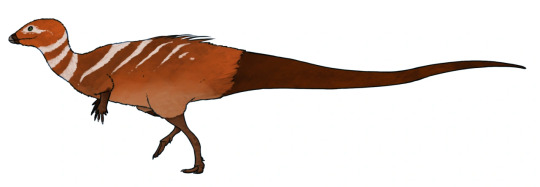
He also named several of their families: Allosauridae, Camptosauridae, Diplodocidae, and Stegosauridae as well as four famous suborders: Ceratopsia, Ceratosauria, Ornithopoda, Stegosauria and Theropoda.
He also had several named in his honor but only Marshosaurus has stood the test of time.

#paleontology#dinosaur#fossils#geology#allosaurus#Othniel Charles Marsh#stegosaurus#diplodocus#apatosaurus#ceratosaurus#dryosaurus#brontosaurus#bone wars#george peabody#yale university#yale peabody museum of natural history
15 notes
·
View notes
Text
The canon monster hunter phylogenetic tree is literally a joke
Something revolutionary was discovered on the UHC discord (as a mod I implore you to not join there’s too many people), that there’s actually a reason why the canon phylogenetic tree is complete garbage.
It turns out it’s actually a bunch of kanji jokes that were lost on us English users.
The groupings of monsters and families is based entirely around the similarities of the kanji of the monsters and irl families. Flying Wyvern and Sauropodomorpha have similar kanji, so that’s why the Japan version of the tree has them listed as sauropodomorphs. But the kanji names also literally describe the monsters too.
For glavenus alone:
The kanji for stegosauria is 剣竜下目 which means the “sword dragon suborder”
And the family name is ステゴサウルス科 Stegosauridae, which is just “stegosaurus family”
The Glavenus superfamily is: 尾剣竜上科 (where “上科” is superfamily)
So the glavenus superfamily is “tail sword dragon” which is an obvious descriptor of the monster, but you can also read it as “stegosaurus tail superfamily”
But people outside of Japan don’t normally read kanji, so for the English version of the tree we just got the literal meaning of the family names without the kanji subtext. So for 18 years the entire English monhun fanbase though that the people who make the trees are idiots because they put konchu as a beetle despite not having insect anatomy, or having the frogs listed as salamanders or the birds in a family outside of theropoda. But in reality, this whole time we never really were meant to take the canon phylogenetic tree seriously.
Because it’s all just one big Japanese pun.
I’m both furious for never realizing this and also impressed by such an elaborate joke
#monster hunter#monhun#monster hunter risebreak#monster hunter rise#monster hunter sunbreak#monsterhunter#monster hunter biology#phylogenetics#phylogeny#taxonomy#cladograms#cladogram#speculative biology#speculative evolution#speculative zoology
152 notes
·
View notes
Text
Work smart, not hard. Nanosaurus hitches a ride on the back of Hesperosaurus. Both animals have been found in the Late Jurassic rocks of the US states of Montana and Wyoming.
Nanosaurus agilis
('dwarf/small reptile, agile')
Neornithischia Nanosauridae
'Drinker', 'Othnielia', and 'Othnielosaurus' have been synonymized with Nanosaurus in recent years.
Hesperosaurus mjosi
('western reptile, for Ronald G. Mjos')
Stegosauria Stegosauridae
At about 156 million years, Hesperosaurus is slightly (few million years = 'slightly' 😆) older than the other stegosaur species in the Morrison.
Morrison Formation, Montana and Wyoming, USA.
Upper Jurassic, ~156 - 148 Ma.
~
Artwork by Antonin Jury.

Daily Dino Fact #47
5 notes
·
View notes
Text
Dinofact #111
Originally thought to be a very primitive stegosaurian, current cladistic analysis places Kentrosaurus as one of the most derived stegosaurs, and a close relative to Stegosaurus.
Source: Wikipedia
#dinosaur#dinosaurs#paleontology#kentrosaurus#stegosaurus#stegosauria#stegosaurian#stegosaurians#stegosaur#stegosaurs#stegosaurid#stegosaurids#stegosauridae#fun facts#trivia#dinosaur trivia#dinosaur fun facts#27th#december#2022#december 27th#december 2022#december 27th 2022
16 notes
·
View notes
Text

Species: Charmarastegos ("Roof-Lizard of Charmara")
Clade: Stegosauridae
Diet: Herbivorous
Size: 26-30 ft
Habitat: Dense Jungles and Coniferous Forests
Threat Level: 4/5 (If Provoked)
Group Orientation: Herds or Solitary
Fun Facts:
The Charmarastegos is the largest of the armored dinosaurs and the most common stegosaur in Trithanas. Even though they are faster than most people think, they rarely run from a fight, instead standing their ground to fight off any attacker. Having eyesight being their best sense, they keep an eye out for potential danger since they are one of the most popular prey choices.
The Charmarastegos is completely comfortable living either solitary lives or in herds of their own kind. They also tolerate the presence of other herbivores such as smaller stegosaur species. Arkians have been active hunters of Charmarastegos for centuries, so they have been known to attack arkians on sight.
#the ainrann chronicles#dinosaurs#dinosaur#stegosaurus#stegosauria#drawing#digital drawing#digital art#digital artwork#my art
0 notes
Link
Check out this listing I just added to my Poshmark closet: Dinosaur Kentrosaurus Rubber Figure Family of the Stegosauridae Small 4.5 x 2 To.
0 notes
Photo

Day 6: Chialingosaurus An Asian stegosaurid from Shaximiao Formation in China. Honestly, I’m never been drawing other stegosaurids like this one before. #Dinovember #Dinovember2022 #paleoart #artistoninstagram #myart #sketchbook #chialingosaurus #chialingosauruskuani #stegosauridae #dinosauria #ornithischia #stegosauria https://www.instagram.com/p/CkpDlGJLY8U/?igshid=NGJjMDIxMWI=
#dinovember#dinovember2022#paleoart#artistoninstagram#myart#sketchbook#chialingosaurus#chialingosauruskuani#stegosauridae#dinosauria#ornithischia#stegosauria
4 notes
·
View notes
Text

Mbielu Mbielu Mbielu
Mbielu-Mbielu-Mbielu es un críptido reptilesco visto en el Congo. Es pacífico y herbívoro y usualmente en la criptozoología se le asoció con un dinosaurio viviente de la familia estegosaurio, particularmente un Kentrosaurus, un gigantesco reptil con aletas en la espalda.
Sólo existen algunos supuestos avistamientos del Mbielu-Mbielu-Mbielu en las aldeas de Bounila y Ebolo que fueron investigados por el criptozoólogo Roy Mackal durante su expedición de búsquedad de Mokèlé-mbèmbé.
Se dice que la criatura es herbívora, aunque aún no se ha recopilado evidencia física de la criatura, por lo que esto no se puede afirmar con certeza.
Este críptido parece estar muy estrechamente relacionado con Stegosauridae prehistóricos, el críptido parecido a una pitón, Nguma-Monene, y el críptido parecido a un dinosaurio Muhuru de las selvas de Kenia. Nguma-Monene tiene crestas similares en la espalda y también fue visto en la República del Congo, mientras que Muhuru tiene una apariencia casi idéntica en comparación con Stegosaurus y Mbielu-Mbielu-Mbielu.
0 notes
Text
Dinosaur series episode two.
Steagosaurus and Allosaurus.
So these two dinosaurs are pretty different, the stegosaurus is a large herbivore and the largest member of the Stegosauridae branch of the Thyreophoran family who lived in the late Jurassic period. While the Allosaurus is a large carnivore belonging to the Allosauridae branch of the Theropod family who also lived in the late Jurassic. The Steagosaurus was found in Wyoming while the Allosaurus was found in Utah. The two states happen to be right next to each other. And when a Large Carnivore and Large Herbivore live next to one another there's obviously going to be some conflict. unfortunately for one Allosaurus that conflict lead to the poor guy getting two of a Steagosauruses 3 foot long spikes stuck right in it's sack. Even worse both the Steagosaurus and Allosaurus died and were fossilized with those spikes in the Allosauruses sack. Poor dude.
0 notes